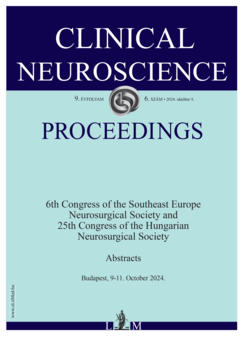Aims: DSA is the gold standard in the diagnosis of spinal dural arteriovenous fistula (sDAVF). However, catheterization of all the possible feeding segment arteries is time consuming with a large dose of radiation and contrast media. Our goal was to evaluate the capability of spinal CTA and MRA to determine the feeding level of the fistula.
Methods: 26 patients underwent spinal CTA and more recently 9 patients had spinal MRA whose clinical symptoms and MRI suggested sDAVF. CTA spine coverage was not limited and usually involved the spine from T2 to the coccyx. MRA had a smaller range of 40 cm, thus spine coverage was positioned to centralise the area of the most prominent pathological vessels on MRI. Subsequently all patients had DSA.
Results: Patients with CTA: DSA confirmed sDAVF in 23/26 patients (10 thoracic, 9 lumbar and 4 sacral feeding). CTA correctly identified a single feeding level (16/23), or at least one feeding artery in case of multiple feeding levels (4/23). Since the additional feeding vessels in these cases were at the adjacent levels on the same or contralateral side, CTA altogether accelerated DSA in 20 of 23 cases (87%). In 3/23 patients (13%) CTA was not able to identify the feeding level although DSA was positive but showing very thin feeding vessels and/or slow flow fistula in these cases. Noted is that in two cases, CTA could detect a sacral feeder which was not found on prior DSA. In 3/26 patients when sDAVF was not proved by DSA, CTA was also unremarkable.
Patients with MRA: DSA confirmed sDAVF in each case. MRA could prove the presence of a fistula in each case and could determine the feeding level in 8 of 9 cases (89%). The single case when MRA could not find the feeding artery was due to the insufficient coverage.
Conclusion: Spinal CTA and MRA are fast and safe techniques that can reliably detect the feeding artery of sDAVFs, thus significantly accelerating DSA in the diagnosis and treatment of sDAVFs. Therefore spinal CTA or MRA can reduce DSA procedure time, radiation dose, contrast dose and risk of possible complications. MRA does not use radiation, is visually more sensitive due to its higher contrast to noise ratio and currently the preferred method of choice. Both techniques can also be used for follow up to check treatment success.




